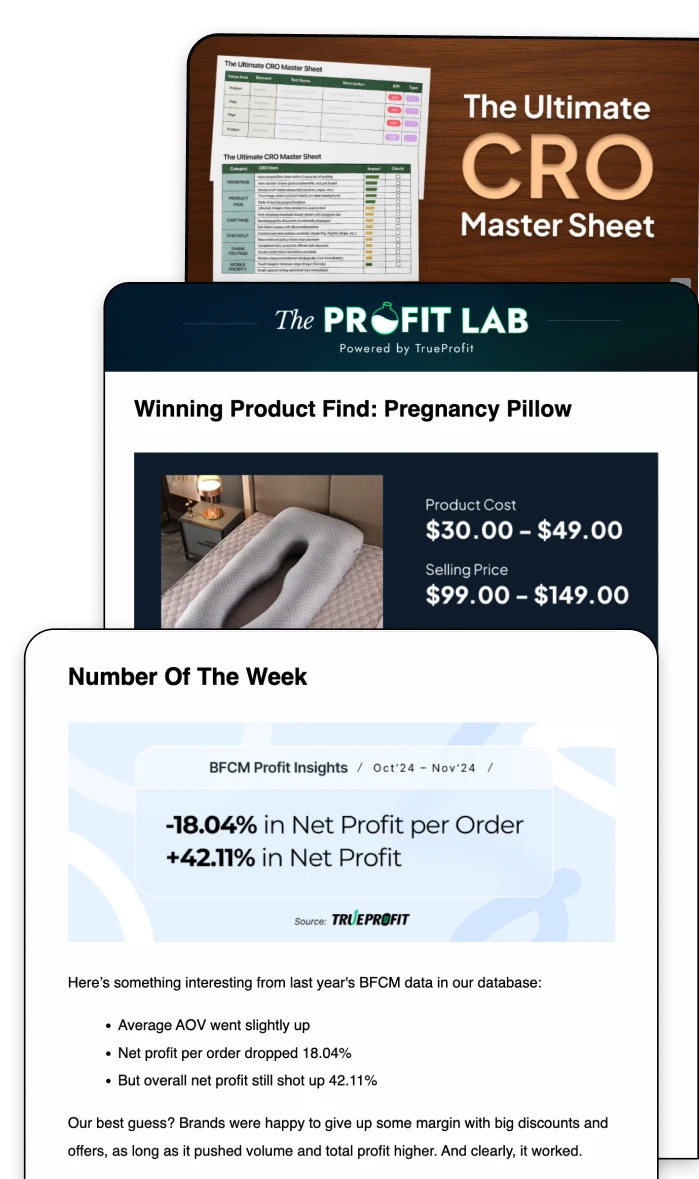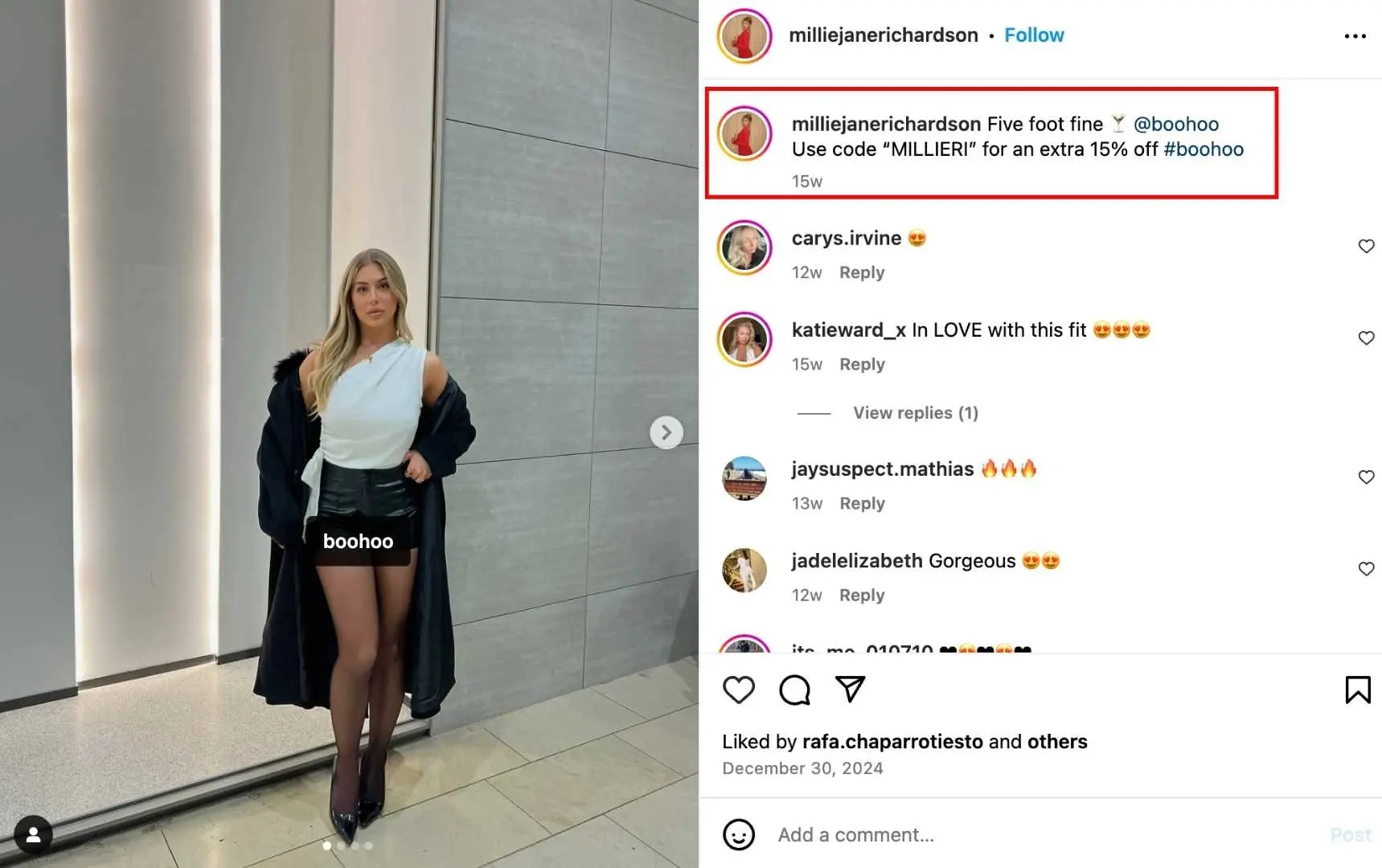10 Must-Try Black Friday Marketing Ideas That Boost Sales Fast
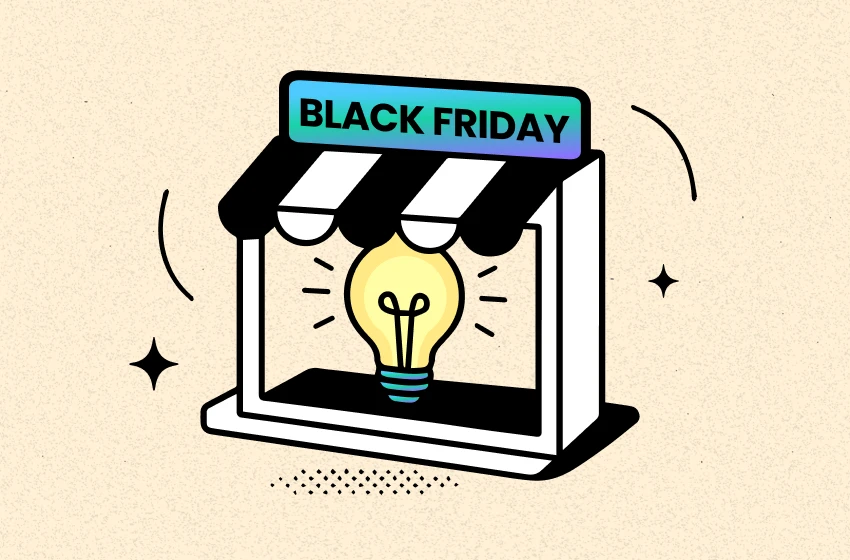
Black Friday is the ultimate opportunity to skyrocket your sales. But with competition fierce, your marketing needs to stand out.
Below are 10 proven strategies you can implement to grab attention, drive conversions, and maximize profits.
1. Run Teaser Black Friday Email Campaigns
Teaser emails are designed to help you communicate upcoming events with subscribers such as upcoming deals, exclusive discounts, or limited-time offers.
The core purpose of these teaser emails is not immediate sales. By promoting the deals that aren't available yet, teaser emails encourage subscribers to visit websites, explore products, and mentally prepare to act quickly when the actual Black Friday deals go live. So when done right, teaser email campaigns can help you drive traffic before the peaks and warm your audience up for the hot sales.
However, teaser emails can be totally tricky. Even if the goal isn’t immediate sales, every teaser email should have a clear CTA.
In eCommerce, merchants often use 3 common CTAs for teaser emails:
Notify Me: It lets customers sign up to be alerted when the product or deal goes live.

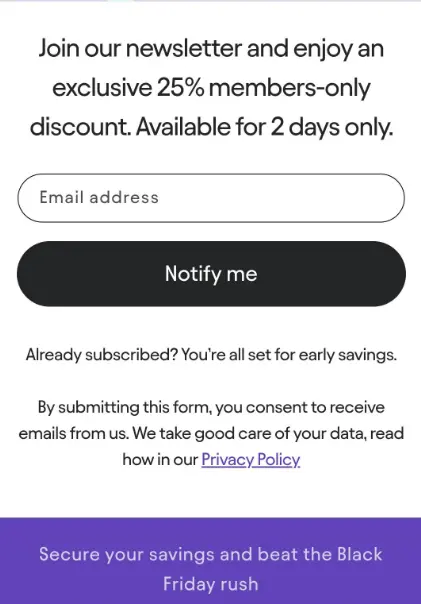
Explore Selection/Take a Look: It invites customers to check out product details while waiting for the sale.

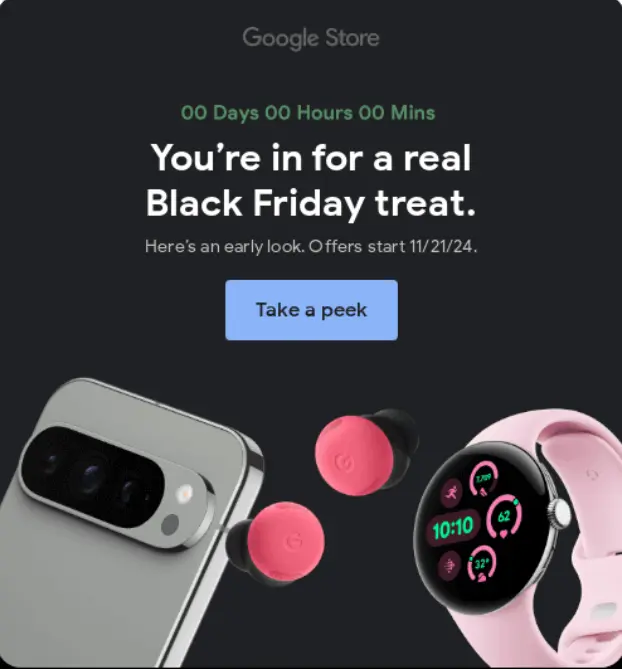
And the most promotional one, Preorder/Secure. It lets customers reserve products before launch, helping you generate sales even ahead of the release.

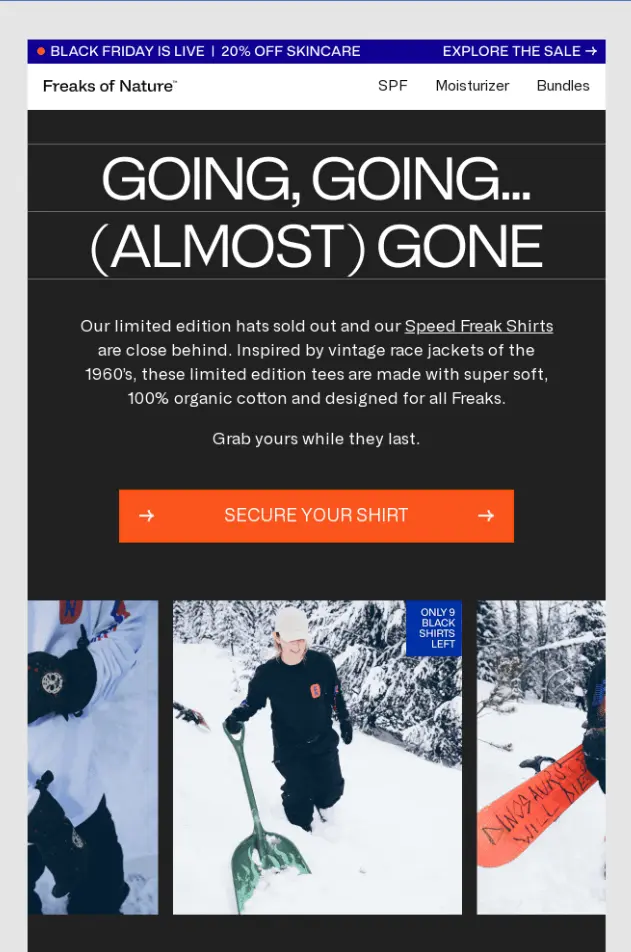
Your Key Takeaway: The key of a successful teaser email campaign is exposing enough to hint what’s coming yet not too much to make customers still curious.
2. Offer a VIP Early Access
Black Friday VIP early access lets loyal customers or subscribers shop the sales before everyone else. For example, sellers can offer pre-orders or early access to limited Black Friday items, using phrases like ‘Shop Early,’ ‘Exclusive Deals,’ or ‘Preview Deals’ to create urgency.

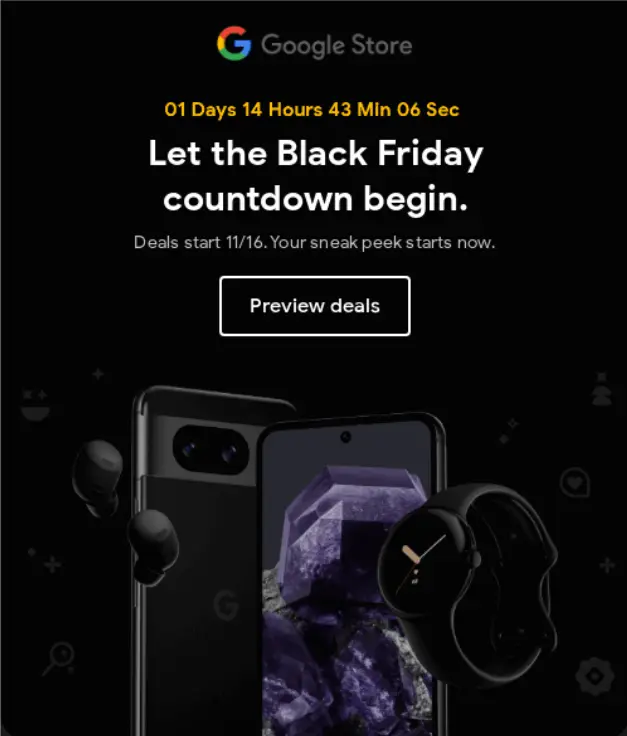
To get the most from VIP promotion idea, keep three things in mind:
- First, being first is more important than saving a small discount. As the above example, your message should use phrases like “Shop Before Everyone Else” or “Preview Deals First” rather than emphasizing a small percentage off.
- Second, the VIPs just love feeling “exclusive”, using words like ‘members-only,’ or ‘invitation-only’ can increase conversions without extra cost.
- And most importantly, not all customers should get VIP access. If everyone is treated as special, no one truly is. Typically, VIPs make up only 15–20% of your customer base—the most engaged, loyal, or high-value shoppers.
Your Key Takeaway: The 80/20 Product rule: Make 80% of your products available to all customers, while reserving 20% of high-demand or limited items exclusively for VIPs. This ensures top products don’t sell out too early for VIPs and protect overall profit margins.
3. Share Coupon Code with Influencer
Influencer discount codes let influencers share exclusive offers with their audience, with codes typically including the influencer's name, nickname like AMANDA10 or MRBEAST. When this code is applied during checkout, customers will receive a discount on select products, sitewide savings, or free shipping as rewards.
By doing so, followers can receive a special offer, while brands easily acquire immediate sales from new or hesitant customers. It’s because followers trust influencers as experts in their niche, so when a recommended deal is shared, it feels more credible and worth trying than a traditional ad.
However, the success will never be random. Influencer collaboration works best when brands intentionally choose influences in the same niche as the product. A report from The Social Cat shows that micro-influencers (10K–50K followers) outperform mid-tier influencers (50K–100K followers), as long as their customers feel relevant. These smaller influencers often offer higher engagement rates and deliver more direct sales because their followers are mostly the highest-intent audiences.
Your Key Takeaway: Every discount code must be trackable, so the brand can measure its contribution to total direct sales, new customer acquisition, and overall ROI.
4. Run Daily Exclusive Deals
Black Friday doesn't mean dropping every discount deal at once in a day - which leads to a huge sales spike on the first day and a significant drop afterward. Many brands now release exclusive daily offers throughout Black Friday week. Each new offer gives shoppers a reason to come back and browse again.
This promotion idea is especially useful for stores with diverse product ranges — letting you highlight different collections on different days, like “Day 1: Skincare Essentials,” “Day 2: Makeup Must-Haves,” or “Day 3: Gift Sets.”

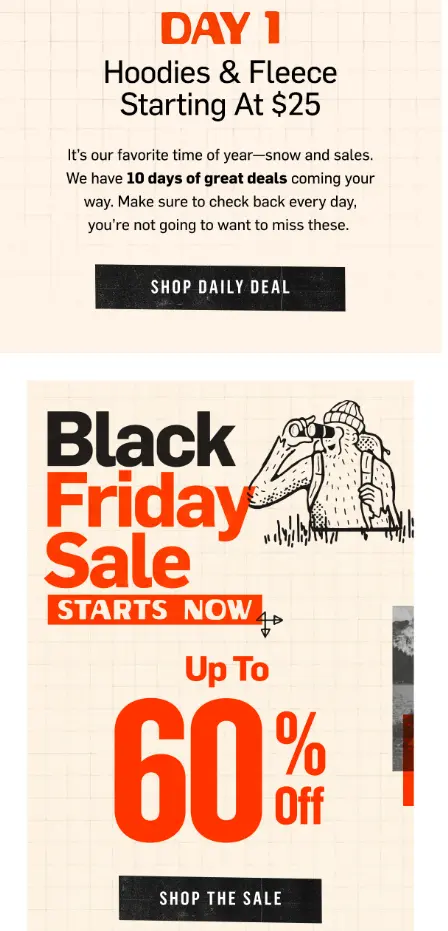
Your Takeaway: This strategy works best when checking your deals becomes a daily habit. By dropping offers at a consistent time and clearly teasing what’s next, you train customers to return to your store regularly—so when your biggest Black Friday discounts go live, they’re at peak intent and ready to buy.
5. Run Hourly Flash Sales
Likewise, dropping new deals every hour is also one of the most effective ways to keep shoppers excited throughout Black Friday. The deal can be anything—like a surprise gift, exclusive discount, or category offer—as long as it keeps shoppers hooked and returns repeatedly for more. Every time they come back to check what’s new, you get another shot at closing the sale or increasing their order value.

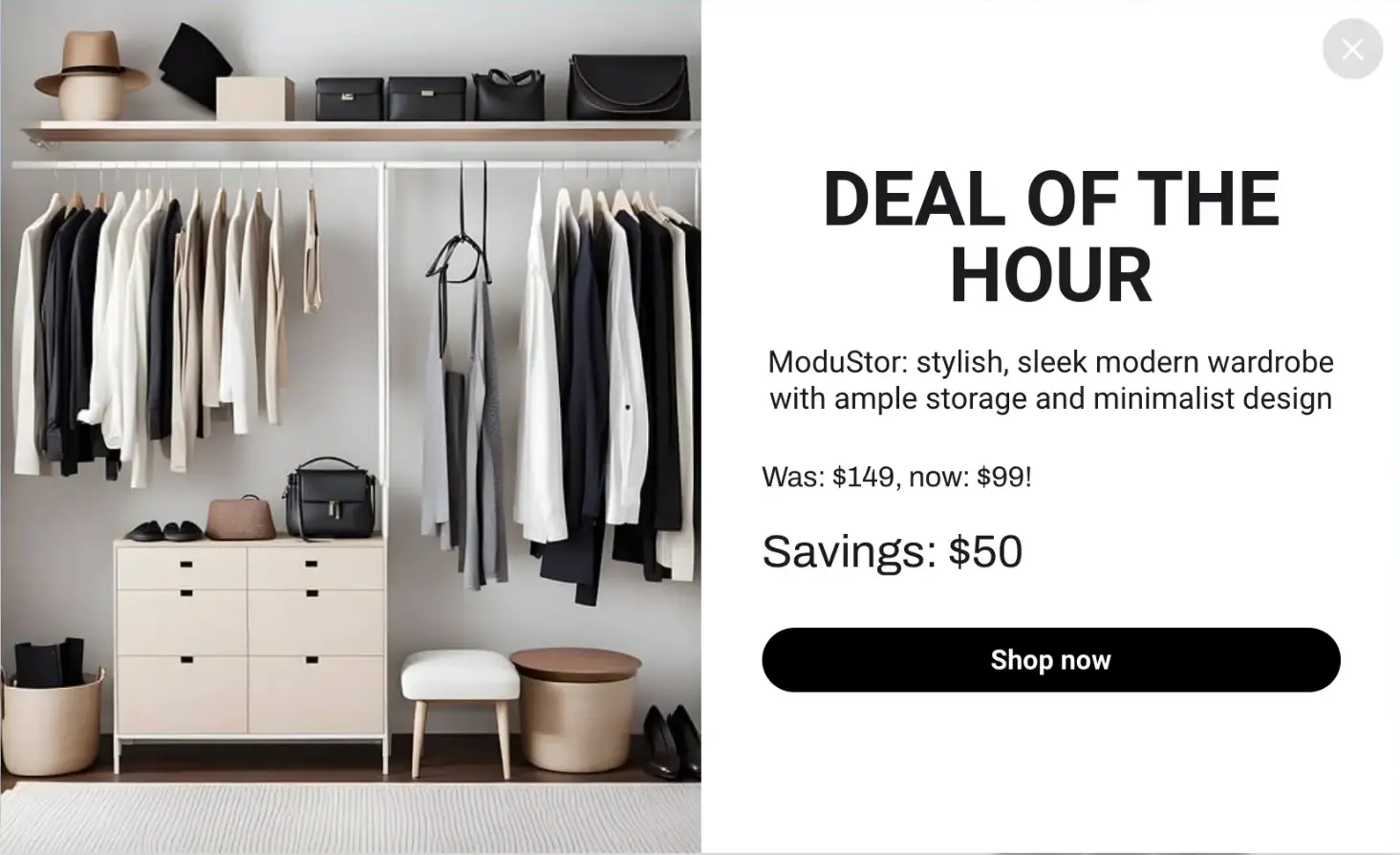
Your deal timing can make or break the day. The best scenario is to start with lighter deals to get people browsing, then drop your biggest discounts later in the day when excitement is at its highest.
Your Takeaway: When we say “hourly”, you actually don’t need to overwhelm your audience with hourly changes. Just three or four well-timed drops still drive good engagement.
6. Offer Free Gift with Every Purchase
Black Friday is flooded with deep discounts—but not every brand truly benefits from lowering prices. Luxury brands risk losing their premium feel while low-cost stores often hurt their profit margin by discounting too heavily.
That’s why some brands take a different route by offering a free gift with every order, usually a small, low-cost item that adds a pleasant surprise. To make their offers stand out, some go further by giving limited-edition or higher-value gifts to customers who spend above a certain amount. Whichever route they take, the goal stays the same—to add value without cutting prices and maximize profit during the busiest shopping season of the year.

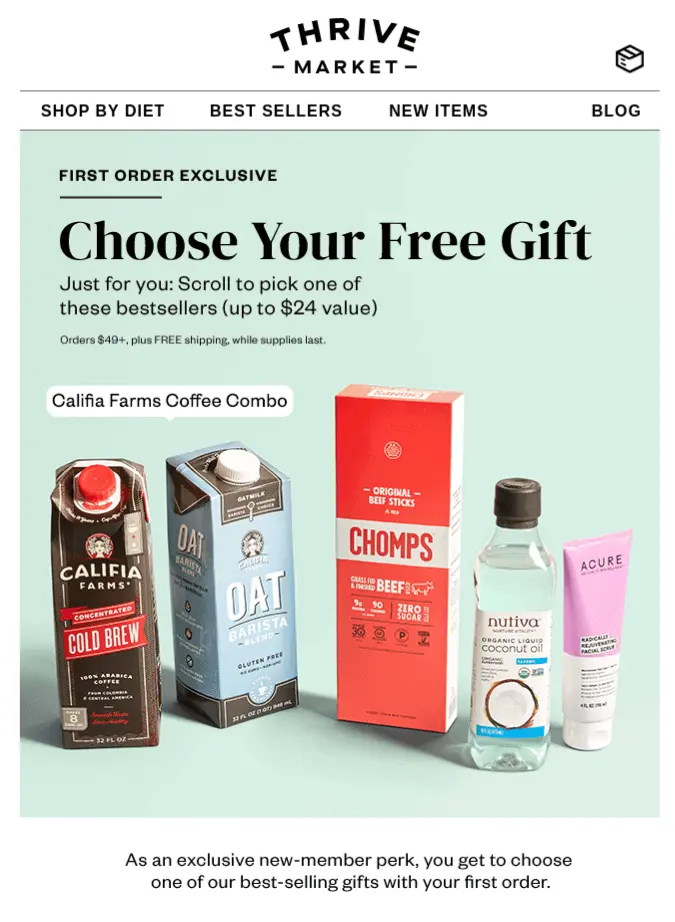
This strategy works best when paired with urgency triggers like a “limited-time flash sale” or “low stock” alert. When shoppers know a free gift might disappear soon, they’re more likely to buy right away instead of waiting until the last minute.
The type of gift you choose matters just as much. The key is to offer something that adds real value but costs you very little — such as mini products, travel-sized samples, or exclusive branded merch.
And to protect your margins, tie the free gift to a minimum purchase amount. This encourages customers to add more to their carts, helping you earn more profit per order.
Your Takeaway: Avoid offering free gifts without calculating profit margin carefully first. The tip here is to pick an item that adds value but costs little - so your profit margin remains healthy per every sold unit.
7. Gamify Your Offers
Black Friday is already a competitive, high-energy shopping event — and gamification makes it far way funnier by using spin-to-win wheels, mystery boxes, or scratch-to-reveal popups.
According to WiserNotify, gamified popups can improve conversion rates by an average of 13%—because they make visitors feel like they’ve “won” something exclusive and increase the likelihood of making a purchase.

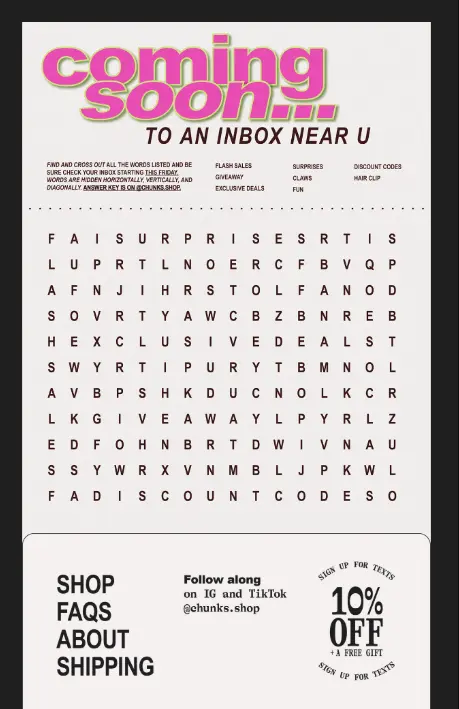
Most importantly, this strategy allows you to collect emails or phone numbers before the game begins. Every spin becomes a new lead, meaning you’re not only driving conversions now but also building a high-intent audience for retargeting after Black Friday.
Your Takeaway: The best approach is to create a balanced mix of rewards, such as 10%, 20%, or 50% off coupons, free shipping, or even a free gift with purchase, while keeping high-value prizes rare to protect your profit margins.
8. Create Mystery Bundles
Bundling products is one of the simplest yet most powerful ways to deliver more value to your customers while increasing your store’s average order value (AOV). Instead of discounting individual items, you’re packaging them together in a way that feels like a better deal—allowing you to maintain healthy profit margins even during Black Friday’s competitive discount season.
For example, you can combine best-selling products with slower-moving ones to create value-packed bundles that appeal to different customer needs.

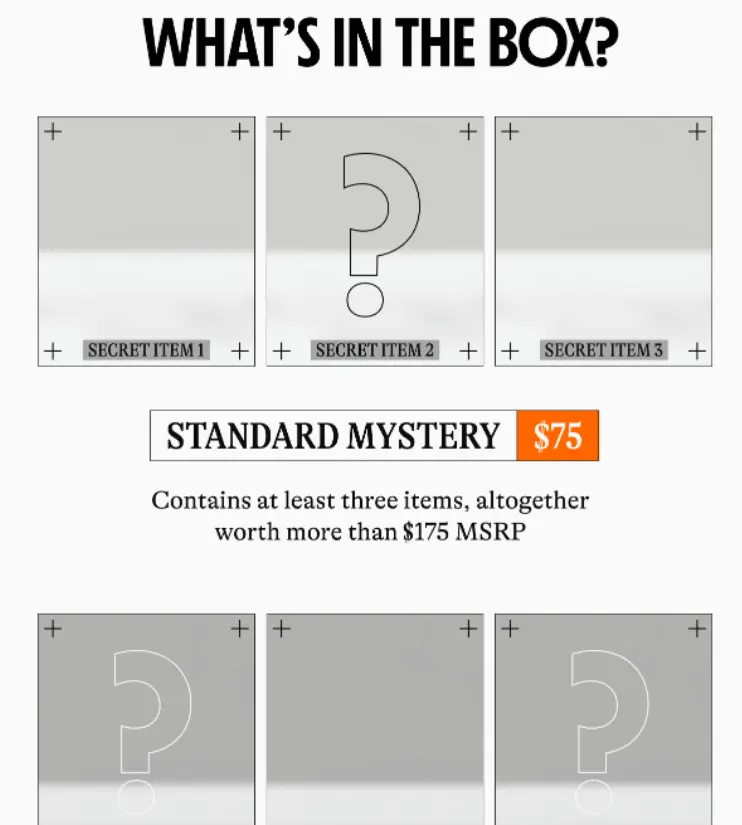
You can take this strategy a step further with “mystery bundles.” These bundles include a surprise mix of products—some of your most-loved or best-performing ones—sold at a discounted rate for customers willing to take a chance. This tactic not only adds excitement but also helps clear old or underperforming inventory while maintaining brand appeal.
Your Takeaway: Consider offering tiered bundles. For example, create options like “Starter Set,” “Essentials Kit,” and “Deluxe Bundle.” Each tier caters to a different budget range, giving shoppers more flexibility while naturally encouraging higher spending.
9. Offer Customized Discount
Instead of offering the same deal to every visitor, you can customize your offers for different groups of visitors.
For example, a first-time visitor who’s just browsing might need a gentle 10% off their first purchase or a limited-time welcome coupon. But a returning customer with a full cart could be more motivated by a $10 off plus free shipping deal to seal the purchase.

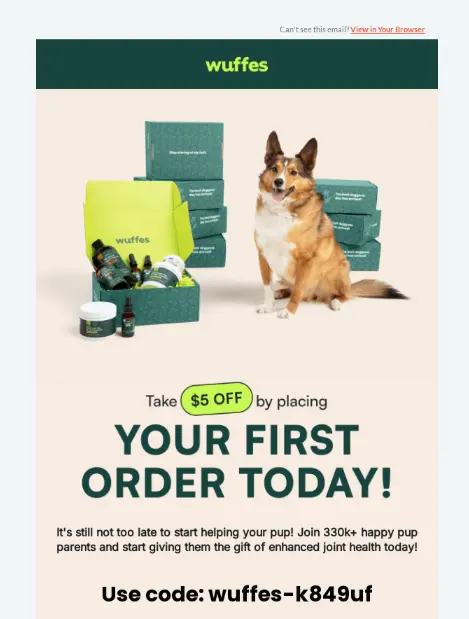
To design a good discount, let’s follow these specific behaviors:
- The total value of items in the cart
- How many times the customer has purchased before
- How recently they last placed an order
- The specific products or collections they’ve viewed most frequently
Your Takeaway: Using flat discounts like “$20 off $100” keeps your margins safer on larger orders compared to broad percentage cuts. You can also make your offer more appealing by adding free shipping, free gifts, or extended returns
10. Launch New Products Just Before D-Day
People naturally pay more attention to “what’s new.” Announcing a product drop a few days before your Black Friday sale can build momentum, especially if teased through email or social media. Shoppers will have a reason to visit your site early and keep checking back when the sale starts.


More importantly, new product launches give you ready-made content for emails, ads, and social posts. For example: “Something new is coming this Black Friday”, “New drop. Limited time. Holiday-perfect”, or “Meet the latest addition before it’s gone.” These teasers help build hype and pre-sale engagement.
Your Takeaway: Customers are more willing to pay full price for something recently launched, especially if it’s positioned as a limited-edition or holiday-exclusive item.
Keep Track of Profitability During Peak Season
Here’s the one rule to remember this Black Friday: Always stay on top of your store’s profitability. Because during Black Friday or any high sale peaks, more orders also mean more costs such as ads, shipping, discounts and hundreds of other hidden costs. Without profit margins tracked closely, those costs can quickly eat into profitability and high sales volume can turn into zero profit fast.
That’s where TrueProfit comes in—an essential tool you’ll want installed long before Black Friday begins. It’s the #1 Shopify net profit analytics app that keeps your finances in control by showing your true net profit and all important business performance metrics in real time. Every expense—from COGS, ad costs to fulfillment fees—is automatically calculated, giving you the clearest view of your store’s performance.
With TrueProfit, sellers can:
- Track every key financial metric — from net profit, profit margin, product cost, ad spend, shipping fee, and more — in real time throughout the season.
- Compare performance daily or weekly with P&L reports to spot sale peaks.
- Identify your most profitable products instantly and scale the ones worth pushing for the big sale.
- Measure ad performance across all channels by its real contribution to net profit.
By understanding your real profit and loss across the event, you make smarter, faster decisions that keep your business truly profitable.
Lila Le is the Marketing Manager at TrueProfit, with a deep understanding of the Shopify ecosystem and a proven track record in dropshipping. She combines hands-on selling experience with marketing expertise to help Shopify merchants scale smarter—through clear positioning, profit-first strategies, and high-converting campaigns.

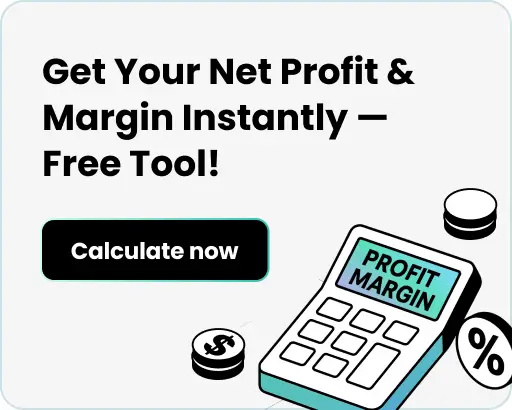
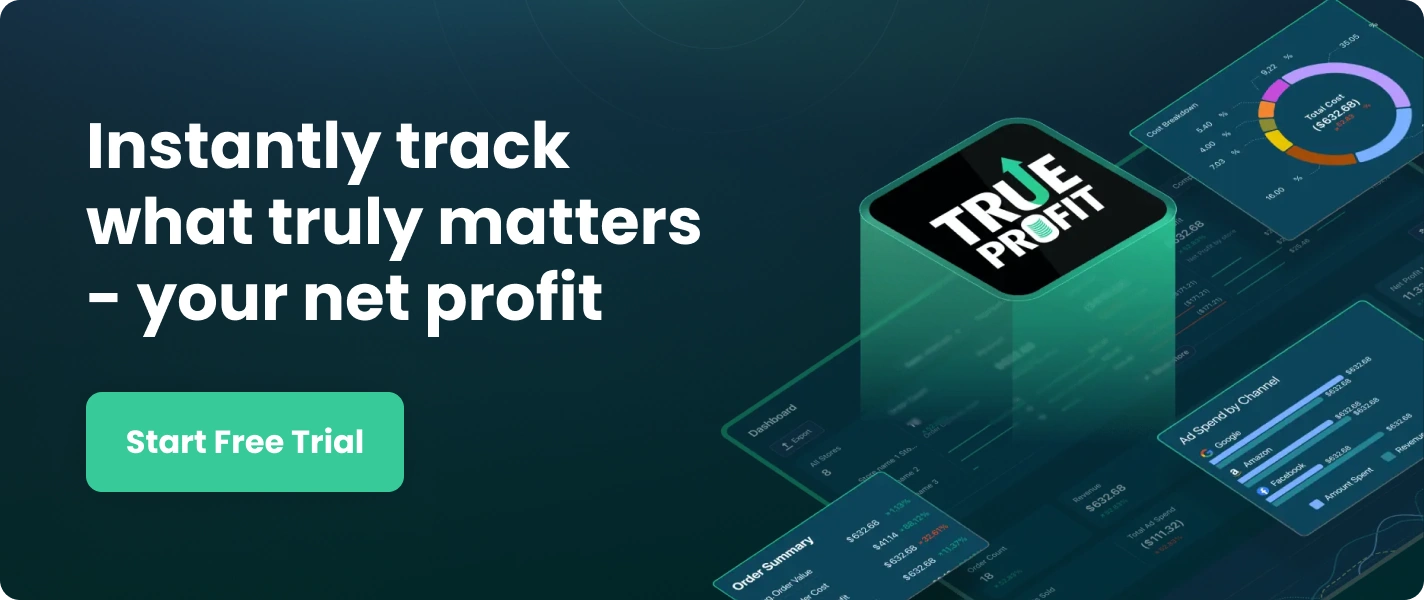

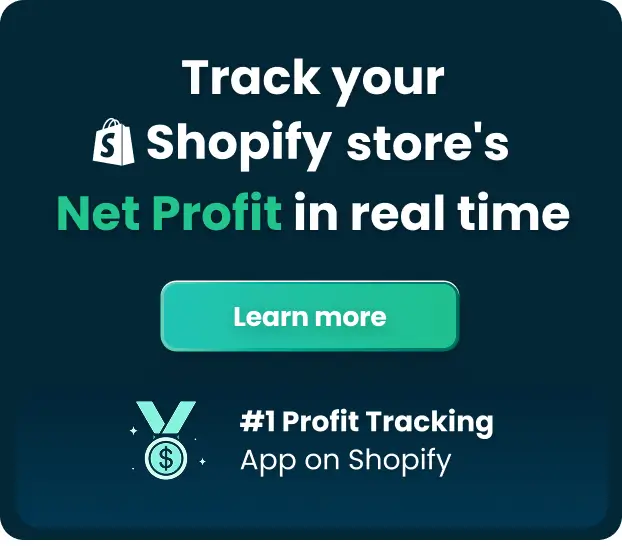
 Shopify profits
Shopify profits